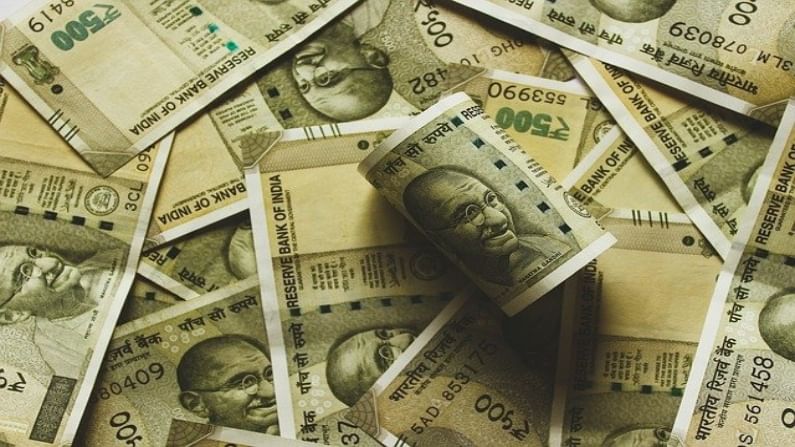Jan-Dhan accounts: Lakshadweep tops in average deposits
Lakshadweep tops with a deposit of Rs 18,684 per beneficiary, Manipur is at the bottom with Rs 2,037
- Avijit Ghosal
- Last Updated : April 9, 2021, 13:42 IST

The union territory of Lakshadweep tops the country on average deposits in Jan-Dhan accounts, according to latest data. According to the data as on March 31, 2021, the average deposit per beneficiary in this scenic island stood at Rs 18,684, which is 5.4 times of the all-India average of Rs 3,449.
The second and third places in the list are occupied by the Union Territory of Ladakh and the state of Goa. While the average deposit in Ladakh is Rs 10,931 (3.16 times the national average) that in Goa is Rs 6,899 (twice the country’s average).
Manipur has the lowest deposit per beneficiary at Rs 2,037. Lakshadweep’s average deposit is 9.17 times of that of this state in the north east.
The biggest state Uttar Pradesh is quite low on this count. On an average a beneficiary in this state has deposited Rs 3,954 in a Jan-Dhan account.
The lowest number of beneficiaries — 6,005 — is in Lakshadweep, which also has got the lowest balance in Jan-Dhan accounts at Rs 11.22 crore.
The biggest number of beneficiaries 7.13 crore is in Uttar Pradesh which also has the biggest amount in Jan Dhan deposits Rs 28,209.09 crore, which is 19.38% of the country’s cumulative deposit in FY21.
Launched in August 2014 targeting the bottom of the financial pyramid, the Pradhan Mantri Jan Dhan accounts constitute a quantum leap in the direction of financial inclusion and has a target of opening a bank account for each adult.
The programme has so far enlisted 42.20 crore beneficiaries — almost half the adult population of the country — who have between themselves deposited Rs 1.45 lakh crore in these accounts which can be opened in public sector banks, regional rural banks and private sector banks.
While there are 12 states below the all-India average deposit amount of Rs 3449, as many as 22 are above it.
Incidentally, the states that are below the average figure are mostly major states — Andhra Pradesh (Rs 2,875), West Bengal (Rs 3,279), Maharashtra (Rs 3,359), Madhya Pradesh (Rs 2,332), Tamil Nadu (Rs 2,700), Telangana (Rs 2,607), Bihar (Rs 3,051), Assam (Rs 2,370), Jharkhand (Rs 3,248), Chhattisgarh (Rs 2,909) and Manipur (Rs 2,037).
The states and UTs that have average deposits above the country’s average are Gujarat (Rs 4,094), Karnataka (Rs 3,504), Kerala (Rs 4,301), Uttar Pradesh (Rs 3,954), Rajasthan (Rs 3,977), Punjab (Rs 4,424), Haryana (Rs 5,558), Delhi (Rs 4,626), Goa (Rs 6,899), Dadra & Nagar Haveli (Rs 5,586), Daman & Diu (4,820), Odisha (Rs 3,835), Puducherry (Rs 3,863), Meghalaya (Rs 5,813), Ladakh (Rs 10,931), Tripura (Rs 6,022), Andaman & Nicobar Islands (Rs 6,741), Mizoram (Rs 4,306), Arunachal Pradesh (Rs 5,033) J&K (Rs 5,707), Uttarakhand (Rs 5,547) and Himachal Pradesh (Rs 6,278).
Two of the targets of the programme – bringing the population under the banking system and empowering women – were both crucial to the programme.
One of the most important immediate collateral benefits was the establishment of a system where direct cash transfers reached the intended targets without any leakage.
Download Money9 App for the latest updates on Personal Finance.
Related
- इंडसइंड बैंक का बड़ा कदम, डेरिवेटिव अकाउंट में मिली गड़बडि़यों की वजह पता करने के लिए पेशेवर कंपनी की नियुक्त
- बैंक जमा पर बीमा की सीमा बढ़ाने से बैंकों के मुनाफे पर होगा असरः इक्रा
- बैंक डूबा तो अब मिलेंगे 8-12 लाख! सरकार बढ़ा सकती है इंश्योरेंस लिमिट
- बंद हो गया बैंक अकाउंट, SIP भी है लिंक तो तुरंत करें ये 5 काम
- J&K बैंक को SEBI की चेतावनी, 1 फीसदी से ज्यादा टूटा शेयर; जानें पूरा मामला
- PhonePe vs. GPay: Indian digital payment giants up for a tussle

